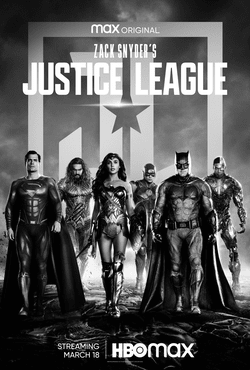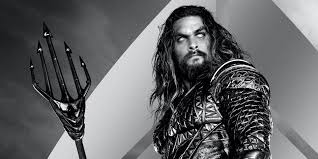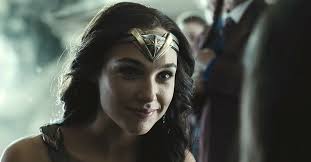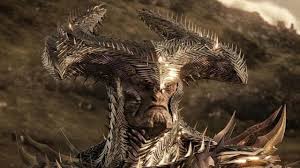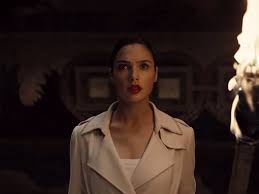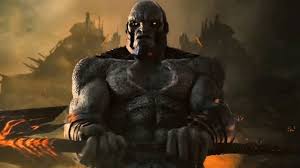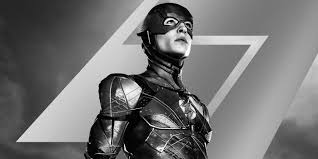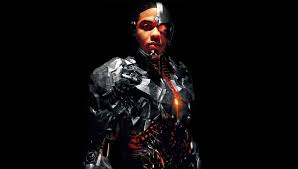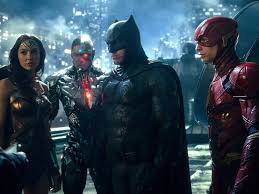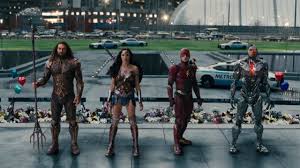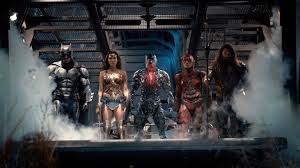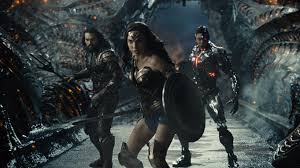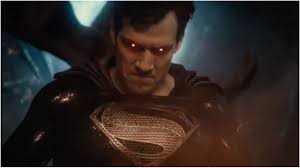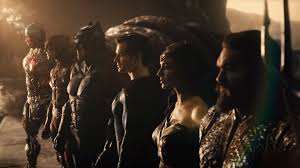|
Hello, and welcome to another episode of moviemanMDG's "Movie Talk", where I talk about everything film-related. The DC Extended Universe has many interesting stories behind the scenes, but none of them intrigued me more than the "Justice League" scenario. In 2013, visionary director Zack Snyder was brought on board to helm a retelling of Superman's origin story. That came to be known as "Man of Steel". Despite receiving a polarizing response from critics and audiences, the film became a financial hit, resulting in Warner Brothers fast-tracking a DC cinematic universe to compete with the Marvel Cinematic Universe. What happened afterward is where things got a little…troublesome. The next two films in the DC Extended Universe, "Batman v Superman: Dawn of Justice" and "Suicide Squad", were met with generally negative reviews from critics and fans even though they gained a respectable amount of money at the box office. Although the "Wonder Woman" film managed to become the best-reviewed installment in the franchise, so there's that. But the studio's problems didn't get worse until the release of "Justice League" in November 2017, not just the film in general, but also what happened behind the scenes. During production, Zack Snyder left the project altogether when his daughter committed suicide in March 2017. As a result, Warner Brothers hired Joss Whedon, the man who helmed "Marvel's The Avengers" and was responsible for rewriting the "Justice League" script, to take over as an uncredited director. Whedon's direction happened to be brighter and more humorous than Snyder's darker style for the DC Extended Universe. Sadly, that direction proved to be far more disastrous than the "dark and broody" aspect. When it premiered in November 2017, the film became a critical and financial disappointment, resulting in Warner Brothers losing around $60 million. It was heavily criticized by reviewers and DC fans for its writing, tone, characters, and over-reliance on CGI, officially derailing Snyder's "Justice League" arc for good. This resulted in the studio changing course to focus more on making standalone franchises in the DC universe, like "Aquaman", "Shazam", and the upcoming "Batman" reboot with Robert Pattinson. After the release of "Justice League", or "Josstice League" as fans like to call it now, an online petition was created to tell the studio to release the "Snyder Cut" of the film. What seemed to be another pointless petition by a so-called "fan" turned out to be a revolution as multiple people showed support for the movement. After years of outcry and a bunch of clues showcasing the existence of Snyder's original cut, the studio finally decided to allow Snyder to finish what he had started, and the rest is history. So the moral of the story is that if you complain long and hard enough, you'll get what you want. It worked for the Sonic design, and it worked for the "Snyder Cut". Fans are weird sometimes. This was something that caught me by surprise after everything that happened with the original cut. Even though I enjoyed watching "Justice League" when it first came out, I can understand why people weren't that impressed with it in the first place. When I first found out that the Snyder cut of "Justice League" is officially moving forward, I became intrigued and excited, mostly the former. I was delighted to hear that Zack Snyder was given a chance to release his own version of the film as an HBO Max original. However, I was also interested in finding out whether it'll make much of a difference or not in terms of quality. It made a difference with the extended version of "Batman v Superman", so the same could be said with "Zack Snyder's Justice League", right? In today's episode of "Movie Talk", I will be finding the answer to that question as I take a look at Snyder's own version of one of the more divisive films in the DC Extended Universe. Before I begin, allow me to bring you up to speed on what "Justice League" is about in case you haven't seen it. The film featured an all-star cast that consists of Ben Affleck, Henry Cavill, Amy Adams, Gal Gadot, Ray Fisher, Jason Momoa, and Ezra Miller. The film's story takes place after the events of "Batman v Superman: Dawn of Justice", where Batman (Affleck) attempts to unite the other heroes with special abilities following Superman's (Cavill) death. Those heroes consist of Wonder Woman (Gadot), Aquaman (Momoa), The Flash (Miller), and Cyborg (Fisher). These heroes must learn to become a team to protect the world from the vicious Steppenwolf (Ciarán Hinds) who, along with his army of Parademons, seek the three Mother Boxes on Earth. The director's cut of "Justice League" obviously has the same plot as the 2017 version, but it also offers a lot more content that Snyder had initially intended to include in his film before he left. It has many additional scenes, new characters, and plenty of world-building elements that tease the upcoming installments in the DC Extended Universe. This resulted in its runtime being a whopping four hours compared to the original's two hours. Not only that, but it also got a rating upgrade because of the additional content. Instead of the kid-friendly PG-13 rating that Joss Whedon's version had, "Zack Snyder's Justice League" got slapped with an R rating due to its amount of violence and language. Prepare to hear Batman drop the F-bomb. Now an R-rated DC Extended Universe film is nothing entirely new as "Birds of Prey" was just released with an R rating last year, and that was the original cut. The extended edition of "Batman v Superman", which Snyder directed, was also released with an R rating. As usual, an R rating doesn't always translate into a good film, let alone an upgrade to a PG-13 rated property. See the "Hellboy" reboot and the 2020 version of "The Grudge" for example. It's the storytelling quality that determines whether or not the film is watchable for its audience. Because of its runtime, the film is divided into six chapters, or parts, for the HBO Max release as well as an epilogue so that viewers can take some small breaks during their viewings. Since I already did a full-on movie review of the original cut of "Justice League", I will be doing something different for the director's cut. I will be looking at the individual parts one by one (with or without spoilers) and then give my overall thoughts on the film based on my thoughts on them. That way, it will be easier for me to talk about it in full detail rather than watch it all the way through and then do a review format on it. I'm okay watching a film that's between two-and-a-half and three hours long in one sitting, but a film that's over that limit? That's not happening. If you haven't watched "Justice League" already, please do so before you read any further, whether it's the 2017 version or Snyder's own version. Anyway, without further ado, let's dive right back into the DC "Snyderverse" and see if it really is the definitive version of "Justice League". Part 1: Don't Count on It, BatmanLet's kick this experience off with the first 30 minutes of the director's cut. Following the title sequence that represents Superman's death scream being heard from across the globe, part one showcases extended sequences of scenes that were in the original "Justice League" cut, such as Bruce Wayne convincing Arthur Curry, aka Aquaman, to join his team, Wonder Woman saving the children from terrorists, and the battle between the Amazonians and Steppenwolf. "Don't Count on It, Batman" immediately sets the stage of what viewers will expect in the remaining chapters in terms of the technical aspects. The aspect ratio was different, the lighting and tone were more muted, it's more violent, and the dialogue has been changed to fit Snyder's style. Heck, even the musical score was changed for the director's cut. Instead of Danny Elfman from the original cut, the score in "Zack Snyder's Justice League" was composed by Tom Holkenborg, also known as Junkie XL. The score reflects more on the emotion in its epic scope than the light-hearted "Avengers"-like tone. It reminded me a bit of the music from "300", especially during the Amazonian sequence, but in a good way. The big highlight of part one, in my opinion, was the Wonder Woman sequence in which she battles the terrorists. In terms of Snyder's direction, the scene successfully showcased how violent and intense the filmmaker intended to represent in his own version. Also, I found it cool to see Wonder Woman kick some butt in R-rated fashion. I would also like to mention Steppenwolf, who got a major makeover from the original version. His armor was more detailed and spikier than his original design, and he's much more ruthless when it comes to his personality. While the CGI for Steppenwolf was still noticeable at times, I like what they did with this version of Steppenwolf so far, thanks to Hinds' menacing performance. Whether or not his role will change will depend on the rest of the parts that follow. Overall, "Don't Count on It, Batman" is a solid beginning to this four-hour-long heroic journey. It instantly showed that this isn't Joss Whedon's "Justice League" or even DC's "The Avengers". This is "Zack Snyder's Justice League", plain and simple. Part 2: The Age of HeroesThe second part is where the expanded story truly shines. "The Age of Heroes" included a much larger perspective on not just the heroes but also its world-building and the villains. Part 2 has Bruce and Alfred (Jeremy Irons) continuing to search for more heroes. At the same time, Diana discovers the greater danger that's to come thanks to the fire arrow sent by the Amazonians. This segment offered more insight on specific elements such as S.T.A.R. labs, Steppenwolf's backstory, and Bruce's redemption arc after Superman's death. It also introduced some characters that didn't appear in the original cut, including Arthur's mentor Nuidis (played by Willem Dafoe), DeSaad (Peter Guinness), and the big bad God himself Darkseid (portrayed by Ray Porter via motion capture). I want to point out that I was really impressed with the design of Darkseid. He's exactly what I imagined him to be like in live-action form. Menacing and frightening. How much screen time he'll have after this part remains to be seen. I also liked the scene between Arthur and Nuidis, mostly because of how it sets up Arthur's path that's later explored in the solo film. It didn't feel like an unnecessary addition since the film has elements that teased the other DC films that came after it. The flashback sequence showcasing the war between Darkseid and the "Defenders of Earth" was also nicely detailed and shot in terms of the cinematography and script. Some of the CGI was still far from perfect, but it compensates by giving the viewers more understanding of its history. Then there's Steppenwolf himself, who happens to have a much bigger purpose compared to his role in the original version. Instead of him being a by-the-numbers villain, he's now a threatening and determined villain who seeks to end his banishment from Darkseid by collecting the Mother Boxes and enslave humanity. "The Age of Heroes" kickstarted its purpose of showcasing more depth in its story and the characters on the right foot while also teasing the reunification of Earth's mightiest defenders. Part 3: Beloved Mother, Beloved SonThe third segment provided extended backstories for two characters: Barry Allen, AKA The Flash (Miller), and Victor Stone (Fisher). Barry Allen attempts to obtain a degree in criminal justice to clear his father's name for the murder of his mother. Meanwhile, Victor is dealing with the aftermath of a car accident that killed his mother and left him critically injured, resulting in his father Silas Stone (Joe Morton) replacing his body with cybernetic parts. Not only does it introduce its viewers to Barry's love interest Iris West, played by Kiersey Clemons, but it also showcased more of Cyborg's tragic backstory as well as his complicated relationship with his father and his abilities. Zack Snyder has mentioned that Cyborg is depicted as "the heart of the movie" in his own cut, and after seeing this segment for myself, I can understand why. Cyborg is shown as an outcast who hides himself away from the world because of his new appearance and what his father did to save him from death. Not only was the Cyborg section effective in terms of character depth and direction, but it also showcased more of Fisher's solid acting skills, resulting in it being one of my favorite parts of the film so far. I also liked that the film represented Victor testing his abilities to help the poor mother pay her rent. It shows that people with gifts can make a difference. As for Barry Allen, I still enjoy him in this version just as much as I did with him in the original cut, if not better. Ezra Miller still did an outstanding job with his performance and his deliverance of his humor, especially during the pet store scene. The visuals and slow-motion sequences for Barry's ability were still top-notch as always. You can't deny the fact that Snyder was the perfect choice to showcase Barry's perspective of the world around him when he's going fast. However, Barry's running style still proved to be pretty awkward. The part also contains extended sequences of Steppenwolf obtaining the second Mother Box from the Atlantians and the Parademons kidnaping the scientists from S.T.A.R. labs. Oh, and there's more screen time for Amber Heard's Mera, but I'm sure you don't really care about that. "Beloved Mother, Beloved Son" was given a chance to explore more of The Flash and Cyborg, and it succeeded with ease. Part 4: Change MachineThe fourth part centers on Batman, Wonder Woman, The Flash, and Cyborg rescuing the S.T.A.R scientists from Steppenwolf and the Parademons. Afterward, Cyborg explains about the Mother Boxes' powers, which Silas used to save him, leading up to the idea of bringing Superman back to life. Meanwhile, Steppenwolf discovers the location of the "Anti-Life Equation". The battle between Steppenwolf and the heroes played out the same as the original cut, just with additional and alternative scenes and Tom Holkenborg's score. Other than that, it's an ordinary superhero action scene that's filled with CGI and a boatload of epic-ness. After that, the film offered more details on the Mother Boxes and a surprising reveal of another DC character that I wouldn't spoil if you haven't watched it yet. One of the things I enjoyed from this part was Darkseid's second appearance. We've seen what he looks like back in part two, and now we get to hear what he sounds like. For someone who's unfamiliar with the character, Ray Porter sure did knew how to make him sound more ominous in terms of his impressive vocal performance. Better move over, Thanos, because there's a new tyrannical alien in town, and he's not a very nice guy. The scene involving Lois Lane (Adams) and Martha Kent (Diane Lane) was also a respectable addition to the director's cut as it explored their own mourning towards Clark's death. "Change Machine" serves as a decent climax to the film's four-hour narrative filled with action, humor, and character depth. Part 5: All the King's HorsesPart five sees the heroes breaking into STAR labs to revive Superman. They succeeded, but at the cost of confronting him and losing the final Mother Box to Steppenwolf. Now, this is where things get even more serious. This segment showcased plenty of stuff that happened to one-up the original's take in almost every way, such as the character interactions and the fight against Superman. Don't worry. Superman doesn't ask Batman if he bleeds in this version. Personally, I am glad that they kept in Barry's reaction to Superman seeing him when he's in super-speed mode. The look on Barry's face still gets me every time. It also featured the last couple of moments between Cyborg and Silas. While I would like to see more of this interaction between the two, it's still pretty heartbreaking to see how their relationship ended. Other than that, "All the King's Horses" was able to put Superman together again. Narratively, of course. Part 6: Something Darker/Epilogue: A Father Twice OverThe sixth and final part concludes the epic journey with the showdown between the Justice League and Steppenwolf. This is another sequence that managed to improve upon the original cut. Not only were the visuals a bit better, but the whole scenario was changed to raise the stakes for the characters, including Cyborg, who plans to separate the Mother Boxes by force. There's no Russian family to save, and the humorous dialogue between Superman and Cyborg was completely removed. They also fixed the sky, so it has a dark bluish color instead of red. It focused more on the exhilarating battle between Steppenwolf and the heroes, which the studio should've allowed Snyder to include in the first place. This was another main highlight for me because of those reasons. Then we have the film's epilogue, which took the pages right out of "The Return of the King" by showcasing multiple conclusions. That can be an annoyance for some people, but other than that, it was a respectable ending that concluded some of the characters' story arcs in the film and offered plenty of teases for what's to come in the sequels, if Snyder and the fans have their way, of course. Overall, "Something Darker" and the epilogue combined themselves to make an ending that truly lived up to the film's epic scale. In conclusion, "Zack Snyder's Justice League" was quite an experience for all of the right reasons. Was it a flawless masterpiece? No. Was it better than the Joss Whedon cut? Absolutely! The Snyder Cut succeeded in providing something that the 2017 version lacked: a soul. Not just in its storytelling but also in its characters. Its four-hour runtime did seem excessive, especially for those who're planning on watching the whole thing in one sitting, but the pacing and its riveting story helped kept my attention from start to finish. There were also a couple of parts where the CGI looked a bit rough. Despite those flaws, the Snyder Cut is bigger, better, and more heroic in every way thanks to some solid performances from the cast, Snyder's direction, Chris Terrio's screenplay, Tom Holkenborg's score, and its entertaining action sequences. From my personal perspective, I wouldn't consider this as an ordinary director's cut. I would consider this as a gift. A rewarding gift to the fans who showed their support for Snyder's vision of the DC Extended Universe, even though "Man of Steel" and Batman v Superman" were understandably flawed. It's more of a way of saying "thank you" to those who pushed the studio to allow the director to make the "Justice League" movie he wanted to make without interference. Sure, it's not going to impress everyone, but in the end, all that matters is that the fans actually did something good for once. It brought the "Justice" back into the "Justice League". If I were to grade this film, I would gladly give it a B+. This is a superb upgrade to the heavily flawed 2017 version that I will highly recommend to DC fans and general audiences. As for the young fans of DC, I would advise them to watch it with a parent or guardian. Oh, and don't forget to plan out your bathroom breaks before you start. You're going to need them. If you're reading this, Mr. Snyder, congrats on making your own version of "Justice League" a reality, and I can't wait to check out your next project on Netflix in May.
0 Comments
Leave a Reply. |
Home of the most friendly movie reviews on the planet.
Categories
All
Follow Me |
- Home
- Classic Reviews
- 2015 Reviews
- 2016 Reviews
- 2017 Reviews
- 2018 Reviews
- 2019 Reviews
- 2020 Reviews
- 2021 Reviews
- 2022 Reviews
- 2023 Reviews
- 2024 Reviews
- Movie Talk
-
Fan Fictions
-
Ed, Edd n Eddy: The Ultimate Ed-Chronicles
>
-
The 'Beginnings' Saga
>
- Ed, Edd n Eddy: The Rise of Maleficent >
- Transformers: Legend of the Black Cauldron >
- Ed, Edd n Eddy meets the Penguins of Madagascar >
- The Eds and Iron Man: Dawn of the Blowhole >
- Ed, Edd n Eddy: The Fast and the Furious >
- The Eds and Kung Fu Panda: Battle for China >
- Ed, Edd n Eddy and the Lion King: The Full Circle >
- Ed, Edd n Eddy meets Thumbelina: Revenge of the Shredder >
- Ed, Edd n Eddy: Journey to Neverland >
- Ed, Edd n Eddy: All Tangled Up >
- Ed, Edd n Eddy's Frozen Adventure >
- Ed, Edd n Eddy's Edventures in San Fransokyo
- Ed, Edd n Eddy: Return to Neverland
- Ed, Edd n Eddy vs The League of Evil
-
The 'Avengers' Saga
>
- The Eds and the Little Mermaid: Age of Extinction
- Ed, Edd n Eddy meets the Ghostbusters
- Ed, Edd n Eddy: A Sea of Adventure
- Ed, Edd n Eddy meets Anastasia
- Ed, Edd n Eddy in Who Framed Roger Rabbit?
- Ed, Edd n Eddy meets the Incredibles
- Ed, Edd n Eddy and the Lion King 2: Simba's Pride
- Ed, Edd n Eddy: Brand New Zootopia
- Ed, Edd n Eddy: Into the Sugar Rush
- Ed, Edd n Eddy and the Big Sea Quest
- Ed, Edd n Eddy: Heroes Assemble
- Fastformers: Rio Heist
- The Loud Ghostbusters >
-
The 'Beginnings' Saga
>
-
Ed, Edd n Eddy: The Ultimate Ed-Chronicles
>
- Contact
- About

